Sensory garden ideas: 17 ways to stimulate the senses with planting, water features, and landscaping
Love the thought of sensory garden ideas? These suggestions will help you create a beautiful and engaging space


Sensory garden ideas are all about engaging the five senses: touch, smell, taste, sound, and sight. And there are plenty of ways to do this to transform any environment into one that's interesting, stimulating, and immersive.
When planning a backyard revamp, it's easy to focus solely on the aesthetics. And in most cases, next in line for consideration are the practical aspects – a kid's play area, or a space to eat outdoors, for example. Or perhaps you're thinking about rewilding your garden, to help support nature. But a backyard can offer so much more. By thinking carefully about features that will enlighten all the senses, even a tiny courtyard plot can be transformed into a soothing and engaging space.
'Sensory gardens invite visitors to touch, taste, listen and appreciate their surroundings,' says Imogen Jackson. Imogen is the Head Gardener for the Midlands site at Horatio's Garden – a charity that creates beautiful and accessible gardens in NHS spinal injury centers. 'Stimulating the senses can trigger memories and lift the spirit, or calm and relax the soul. Spending time in a sensory garden can improve sleep and wellbeing and by encouraging a focus on textures, tastes and sounds, can increase mindfulness and mood.' What's more, 'a sensory garden can encourage people of all ages to spend more time outside,' she adds, 'with all the benefits that fresh air and sunshine bring.'
With a bit of creativity and know-how, it's not too difficult to recreate. In fact, once you know where to start, you can begin adding sensory features to any of your garden plans.
Sensory garden ideas: 17 tips to create a soothing ambience in your plot
These sensory garden ideas will make spending time in your plot a more immersive and enjoyable experience – from cooling water features to beautiful planting schemes that smell just as wonderful as they look.
1. Add cooling pools
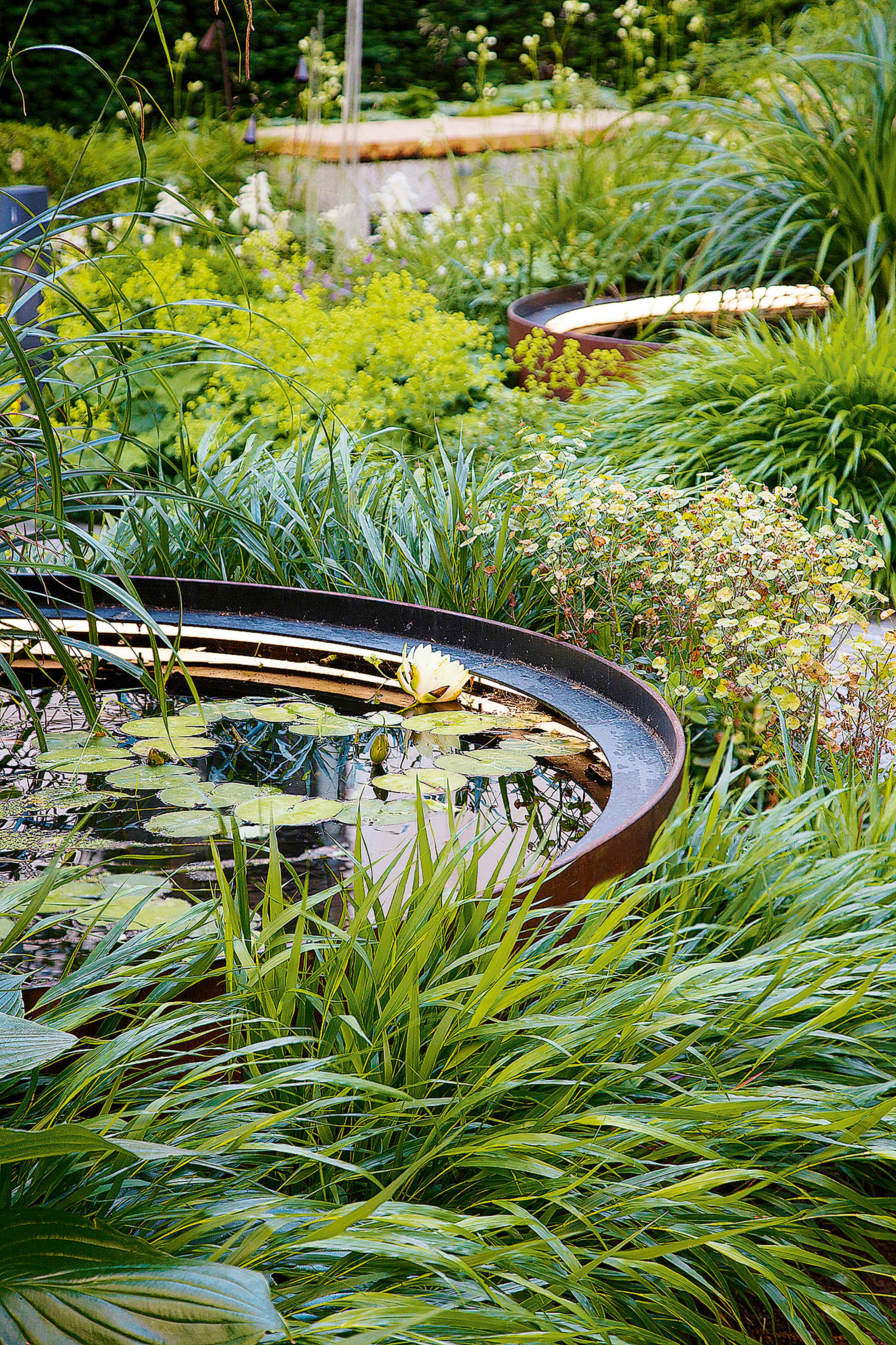
Water feature ideas are, of course, wonderful additions for a sensory garden. Water sends sparkling shimmers across the plot as it reflects the midday sun, it welcomes dragonflies, frogs, and other wildlife, it's refreshingly cool to the touch, and the gentle splash of a visiting bird taking a dip is surely a soothing sound for anyone.
'The sound, sight and – if possible – feel of water trickling is very calming and pleasant,' says Imogen Jackson of Horatio’s Garden. 'Each of Horatio's Gardens has a water feature and they are the most popular spaces in the gardens.'
Weathered-steel pools such as this one above add a rustic yet modern feel to a plot – you could even add more than one, to really make a statement. Surround with lush foliage to soften the edges and create a more natural feel. The serene sight of a lily or two floating across the water's surface is a delight for children and adults alike and will only add to the appeal.
2. Surround doorways with scented flowers
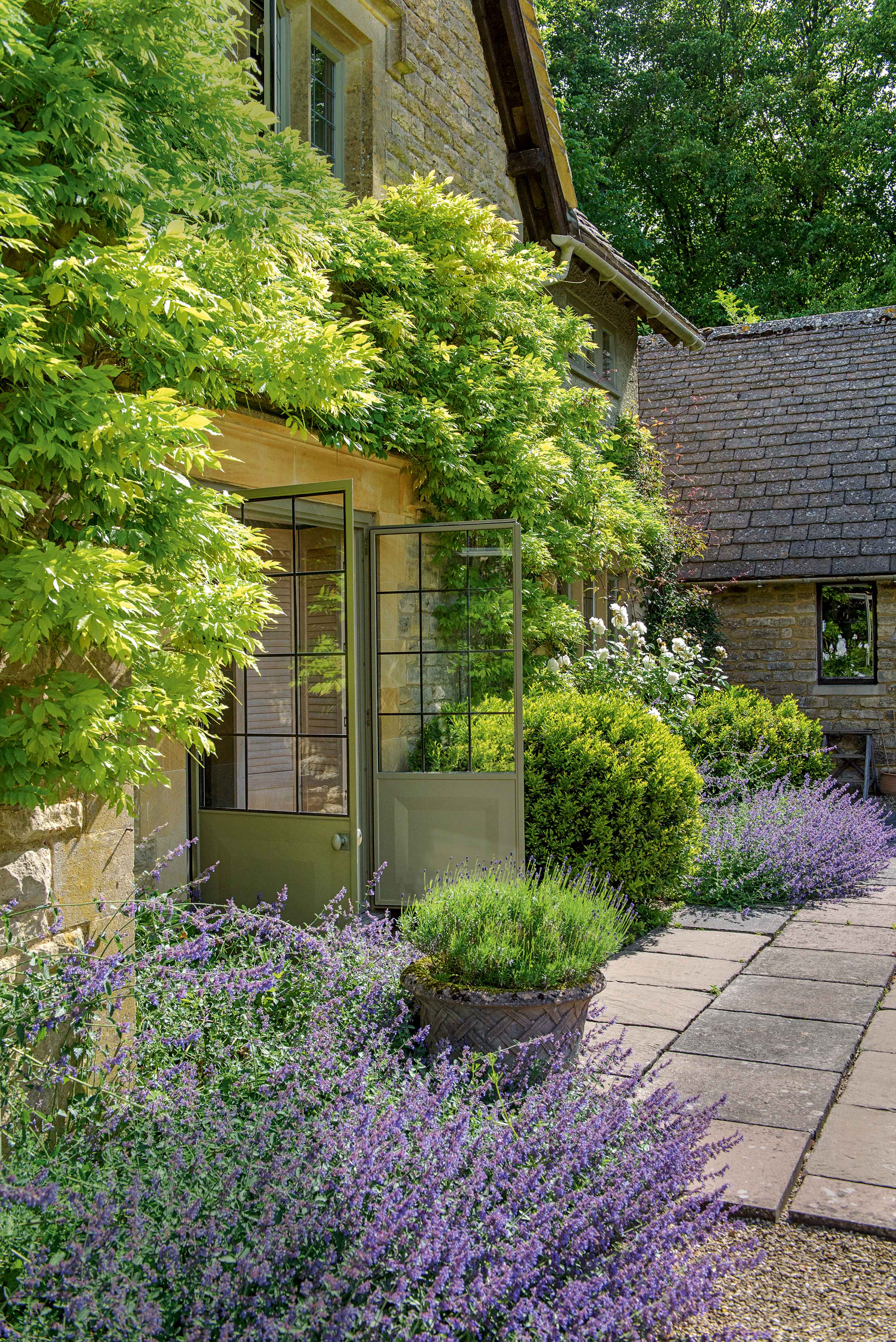
Nepeta (otherwise known as catmint) and lavender are two beautiful perennials that sport breathtaking purple blooms. Position in a sunny spot by your front or back door and you'll be welcomed not only by their sumptuous sight but also by the pleasing fragrance they release into the air.
Lavender works equally well positioned along a pathway, bringing joy to anyone passing by. Our guide on how to plant a lavender hedge will help you to get started.
3. Add stepping stones across water
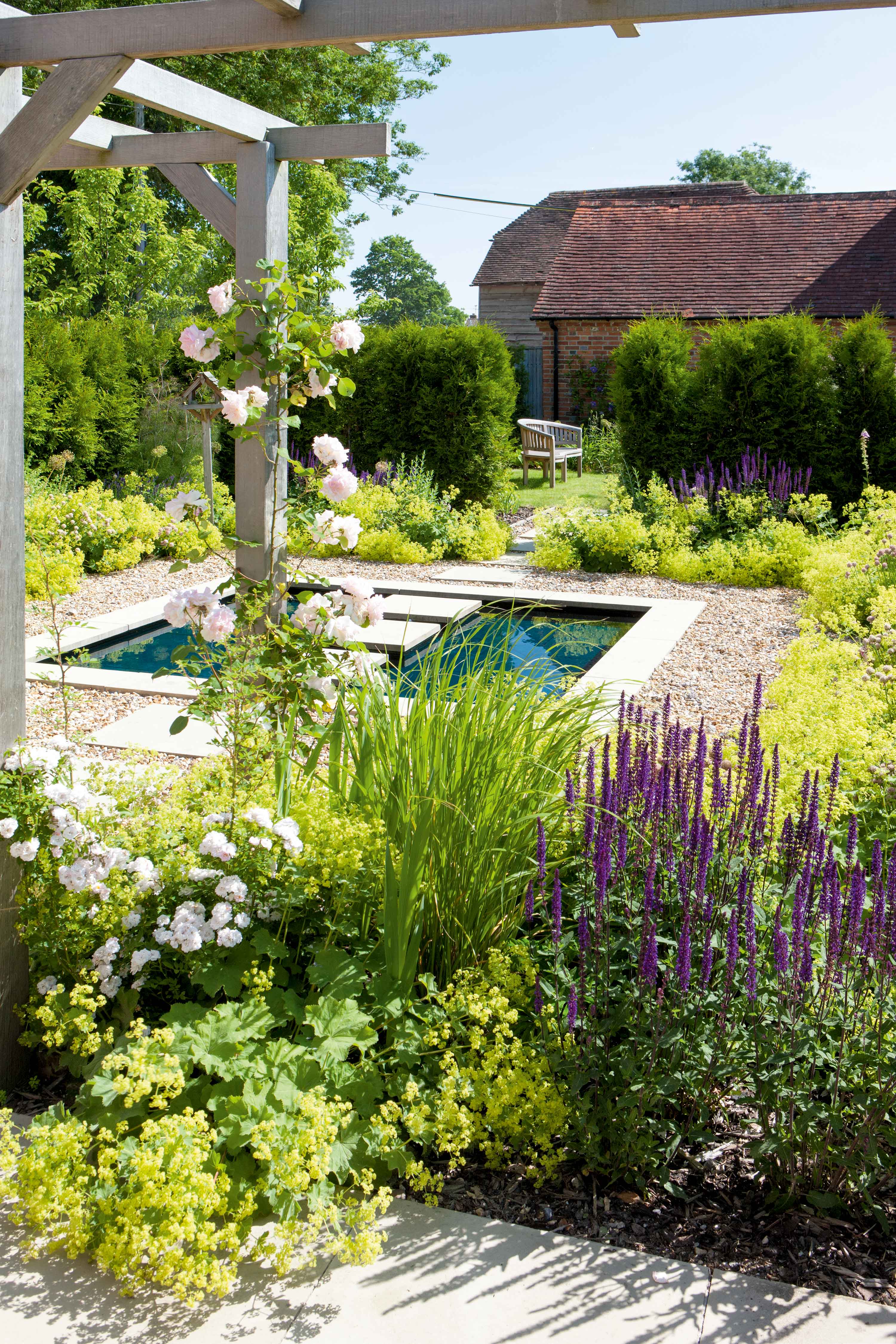
A pond can make a stunning focal point for your sensory garden ideas, and we love the sleek edges of this one above. It provides a striking contrast against the surrounding beds that are filled with vivid Alchemilla mollis and purple salvias.
Meanwhile, stepping stones encourage mindfulness, allowing visitors to slow their pace and consider their journey across the water more carefully.
Roses on a nearby pergola will add to the sensory impact further – providing a fragrance that is well-loved by any gardener. If you love a rose as much as we do, our guide on how to prune roses will come in handy to keep them in tip-top condition.
4. Pick soothing color schemes

'Know whether you want an area to be calming or invigorating and use appropriate colors in your planting scheme,' suggests Imogen Jackson, Head Gardener at Horatio’s Garden Midlands. Green is the most calming color, she says, whilst blues, purples and whites can add to this effect.
This flowerbed above is a lovely example, showcasing a mix of textures and forms in a streamlined palette. The giant heads of alliums are particularly striking and will continue to provide architectural structure even when they go to seed.
Our guide to garden color schemes has more inspiration.
5. Welcome in wildlife
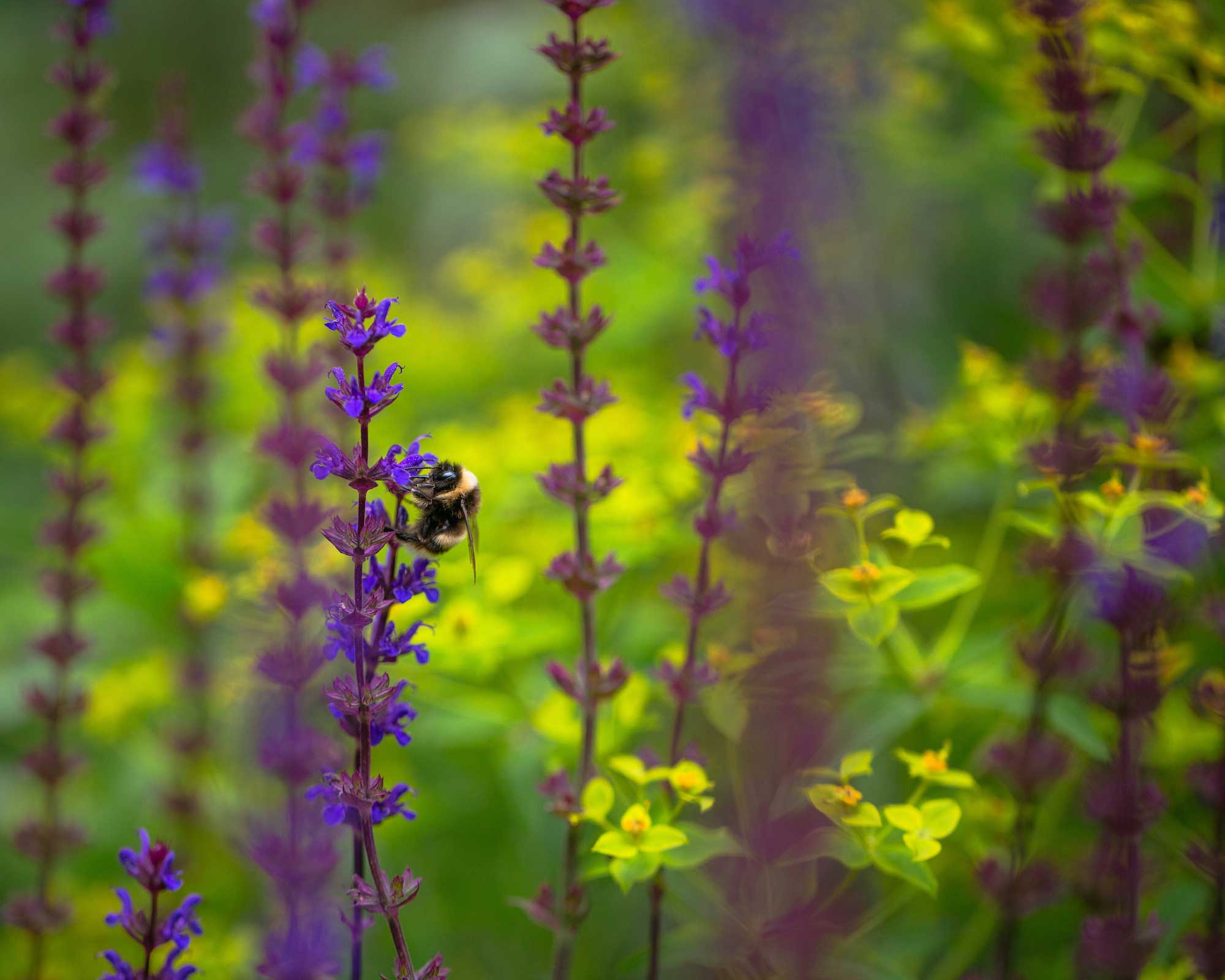
'Encourage wildlife,' advises Imogen Jackson. 'Birds, bees and butterflies make a garden so much more enjoyable and beneficial, and are essential for sensory stimulation. Birdsong is one of the most calming and uplifting noises for people to listen to.'
Provide visiting creatures with food, shelter, places to forage and perches using bird feeders, habitat plants, bird tables, nesting boxes and a bug hotel. You can find out how to make a bug hotel with our guide, whilst our tips on how to attract birds into your garden are well worth a look if you want to welcome feathered friends.
'Native plants will help to support local wildlife,' Imogen adds. You can find more wildlife garden ideas in our feature.
6. Grow edible crops
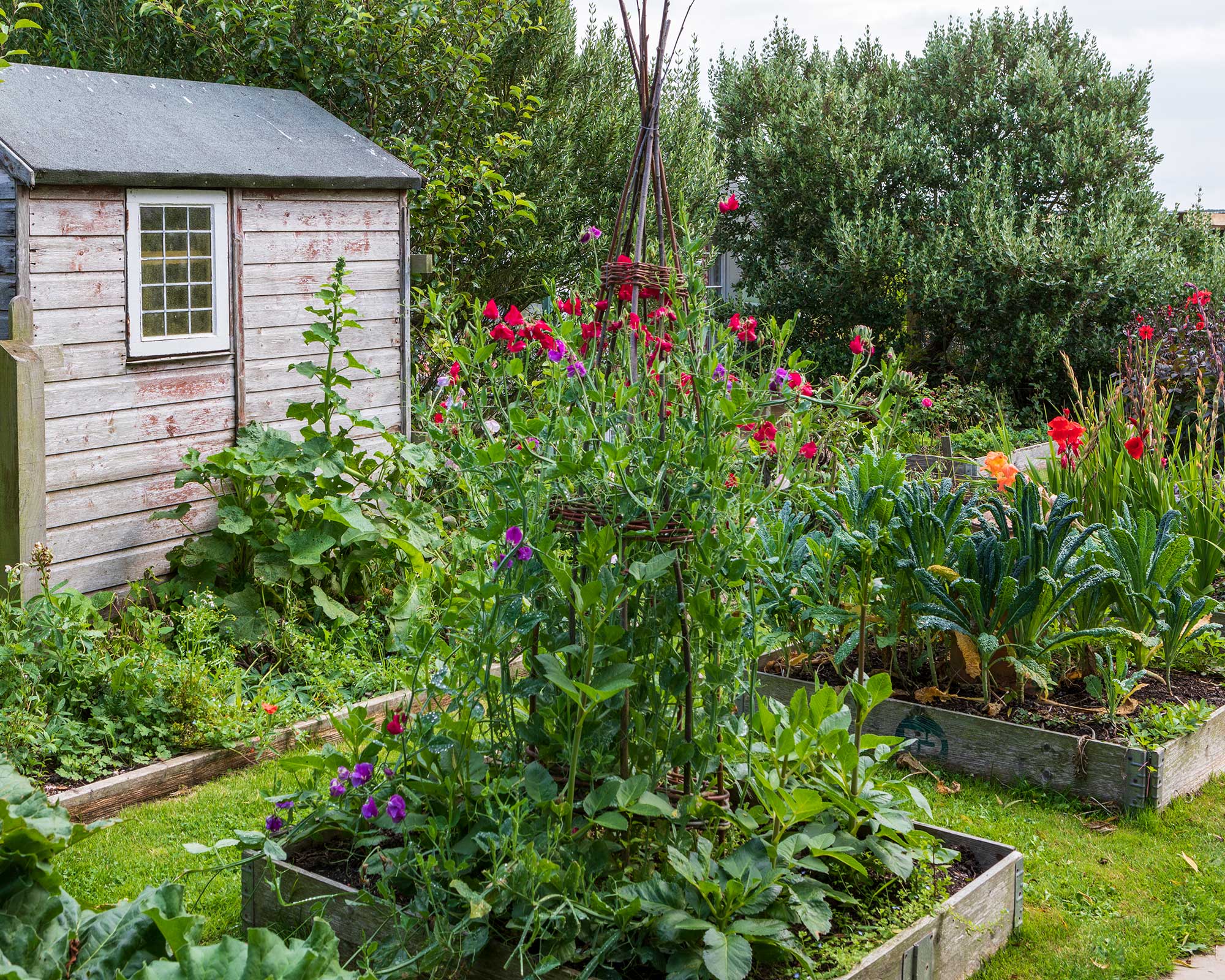
Try growing your own crops as part of your raised garden bed ideas. In doing so, you'll encourage everyone to interact with the sights, smells and tastes of nature's harvest. Raised beds, as well as tall pots and trellises, will also help to bring the plants within reach, as says Imogen Jackson of Horatio’s Garden.
However, remember to 'consider safety elements, depending on who your garden is aimed at,' she adds. Beware of mixing edible and non-edible plants. It might even make sense to exclude poisonous, prickly and thorny plants altogether.
7. Add texture and sound with bamboo
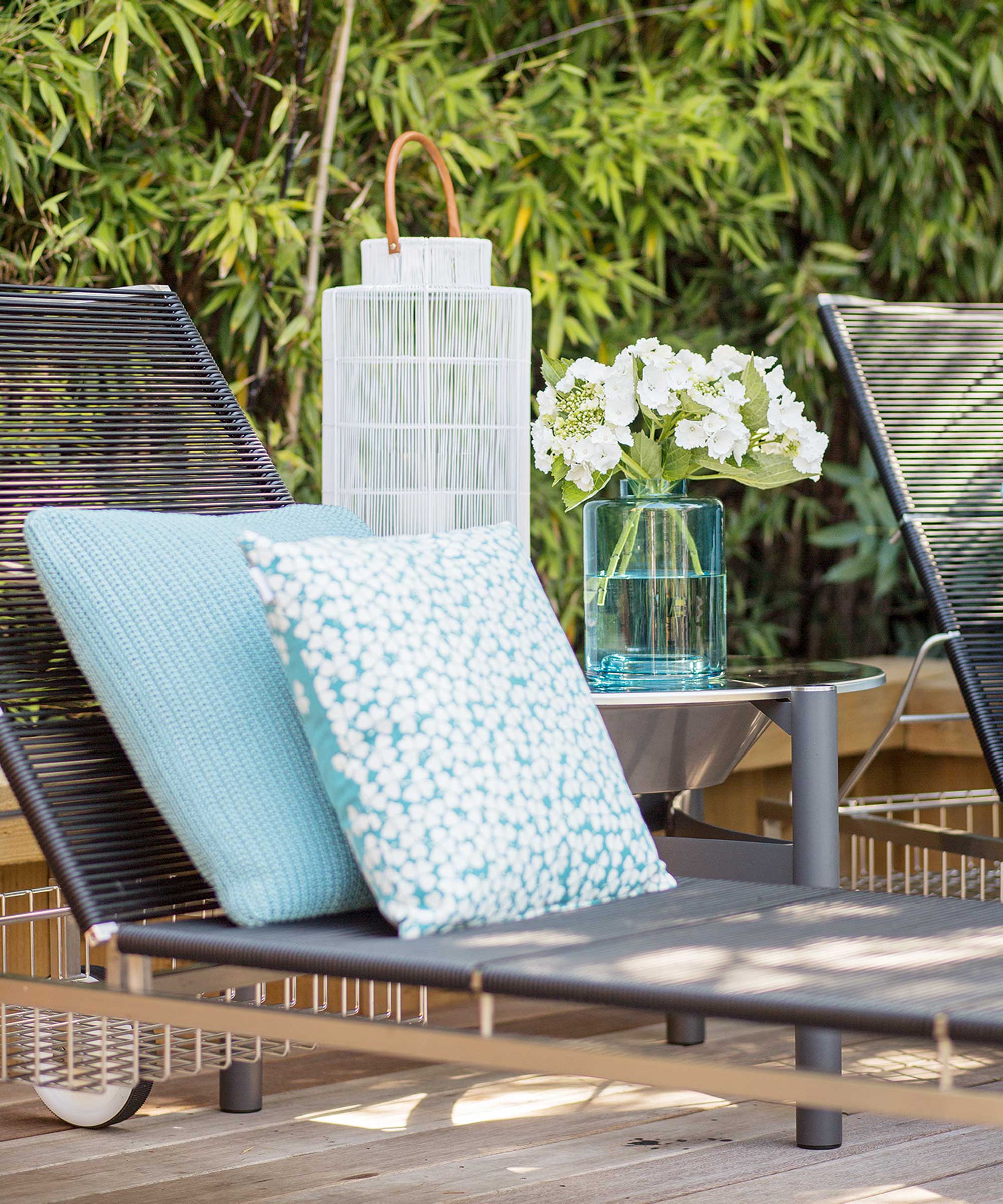
When it comes to planting, 'consider movement and texture,' suggests Imogen. 'Here at Horatio's Garden Midlands we have swathes of bamboo which sound wonderful as the wind blows through.'
Take a cue from this set-up if you're learning how to grow bamboo and position them around a sun lounger or other seating area. That way you can lie back, close your eyes, and immerse yourself in the soft sound on the breeze.
8. Hang up wind chimes
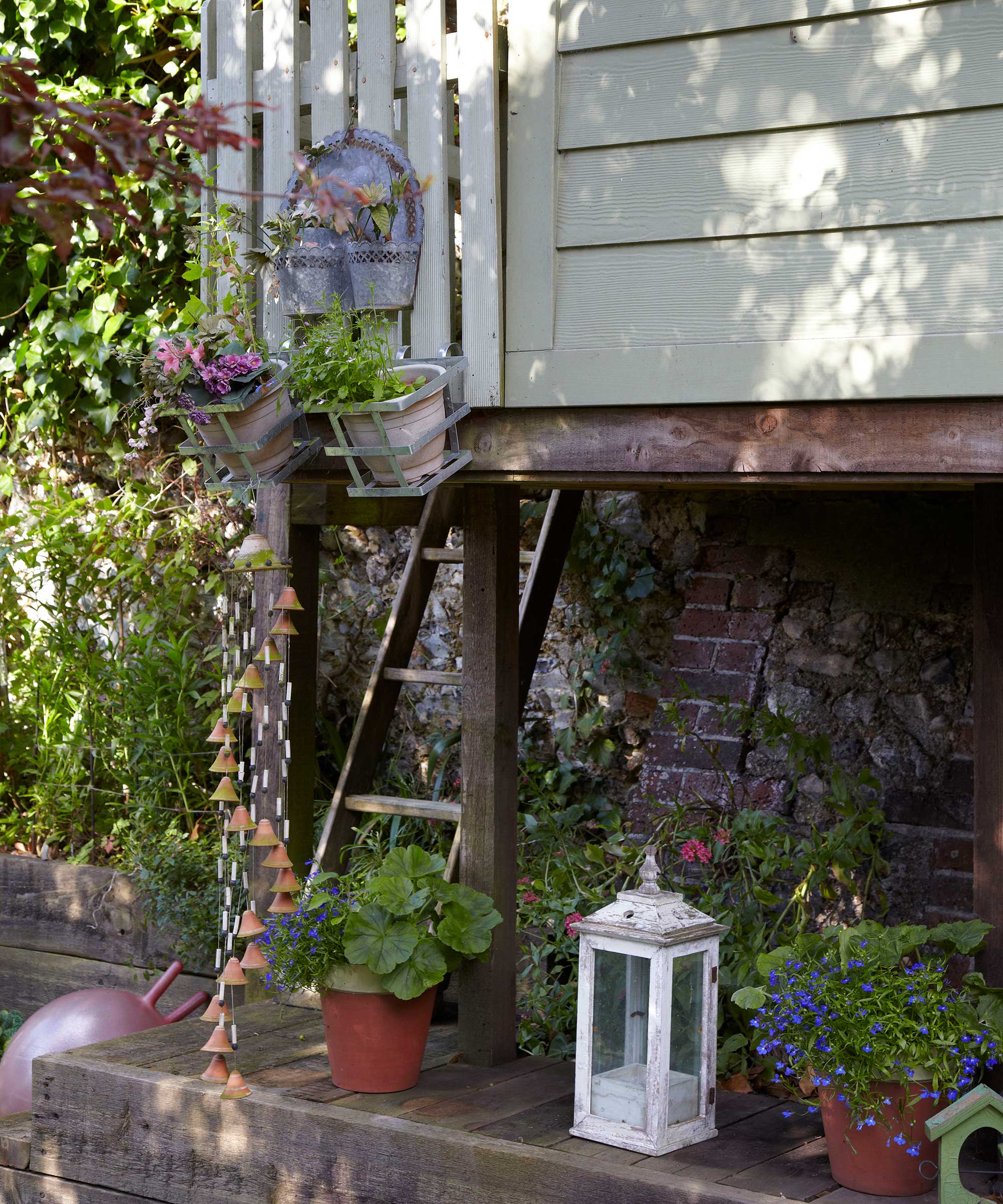
Speaking of relaxing sounds, wind chimes won't go amiss as part of your sensory garden ideas, either. Whether you go for a wooden, metal, or mixed-media design like this one, it's a surefire way to boost the ambience of your plot. They make a lovely addition to Zen gardens too.
9. Transform courtyard paving with plants
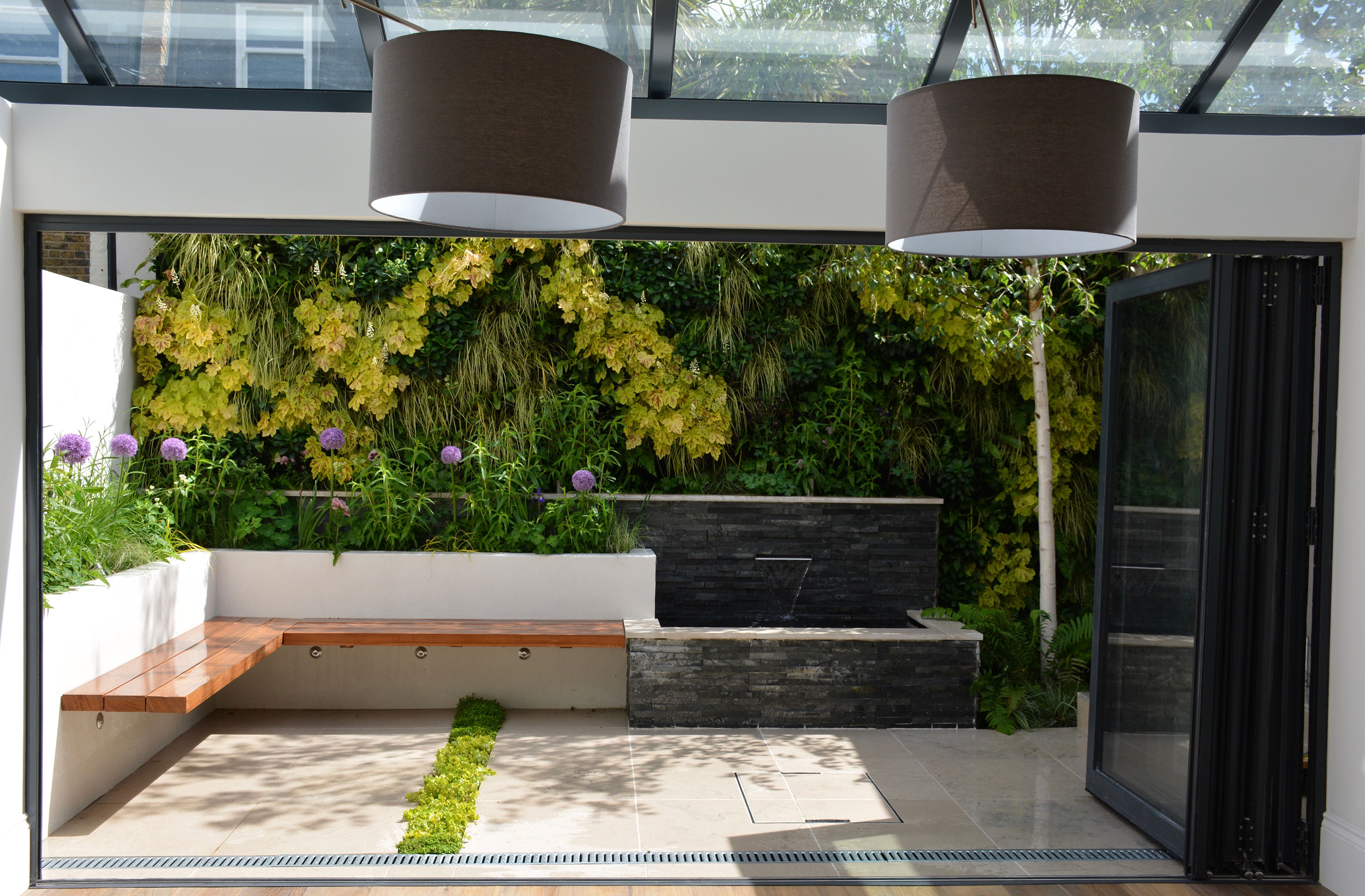
Even a small terrace, patio, or courtyard can be turned into a soothing oasis, as demonstrated here by Tom Howard Garden Design.
Many sensory features have been incorporated to provide an immersive and stunning environment. For one, the living wall adds a breathtaking backdrop, rich with textural foliage. Water peacefully trickles nearby, due to the contemporary water feature. And alliums provide a pop of color and will welcome the buzz of visiting bumblebees.
However, one of our favorite aspects here is the planting strip, which cuts across the patio. A mixture of Lysimachia nummularia (creeping Jenny) and Soleirolia soleirolii (otherwise known as mind-your-own-business) has been used, Tom Howard explains. Not only does it prevent the paved area from being dull, it also helps to lead the eye from the house to the garden, he adds.
You could also use hardy herbs such as thyme, or even dwarf chamomile, to add a scented element to the scene.
10. Use corten steel for a contemporary look
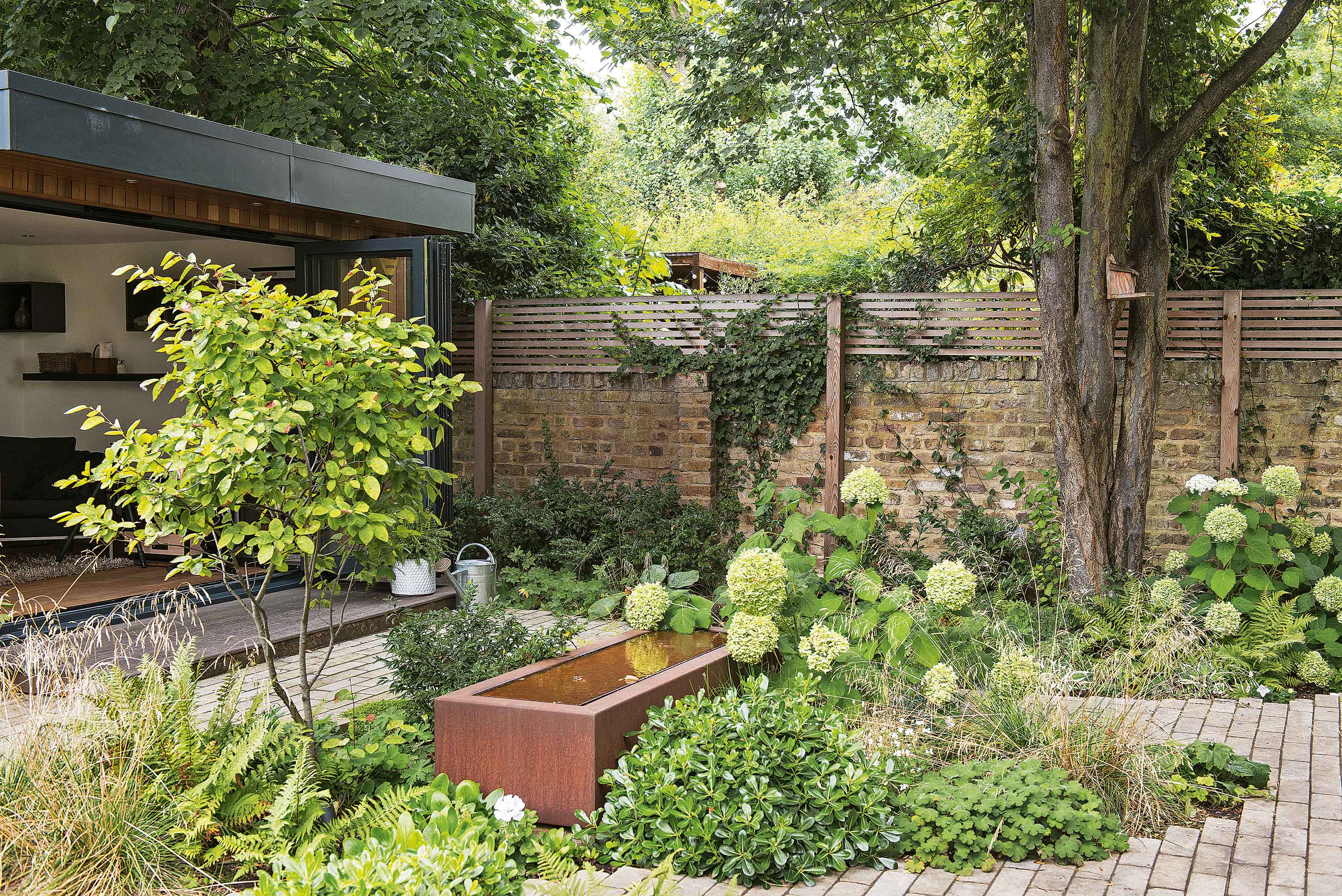
Get back to nature by encouraging a wilder look in your garden. Curved, freeform beds can be filled with the likes of ferns, ornamental grasses, small trees and blousy heads of hydrangeas for a visual treat. Opt for similar hues to keep it feeling balanced.
Combine with a water feature to create a sensory vista – Corten steel is a popular choice and adds a warming tone with its rusted patina.
Our guides on how to grow ferns and how to grow hydrangeas will help you recreate the scene.
11. Create a sense of discovery with pathways

The most successful garden path ideas don't simply create a way to get from A to B, they can provide a sensory experience, too. This design incorporates an element of tactility, as passers-by can reach out and feel the soft stems of ornamental grasses planted en masse either side.
Small trees overhead add a forest-like feel, and help to screen the building behind. Allow the path to gently wind through your plot to add a sense of discovery and intrigue.
12. Adorn steps with roses
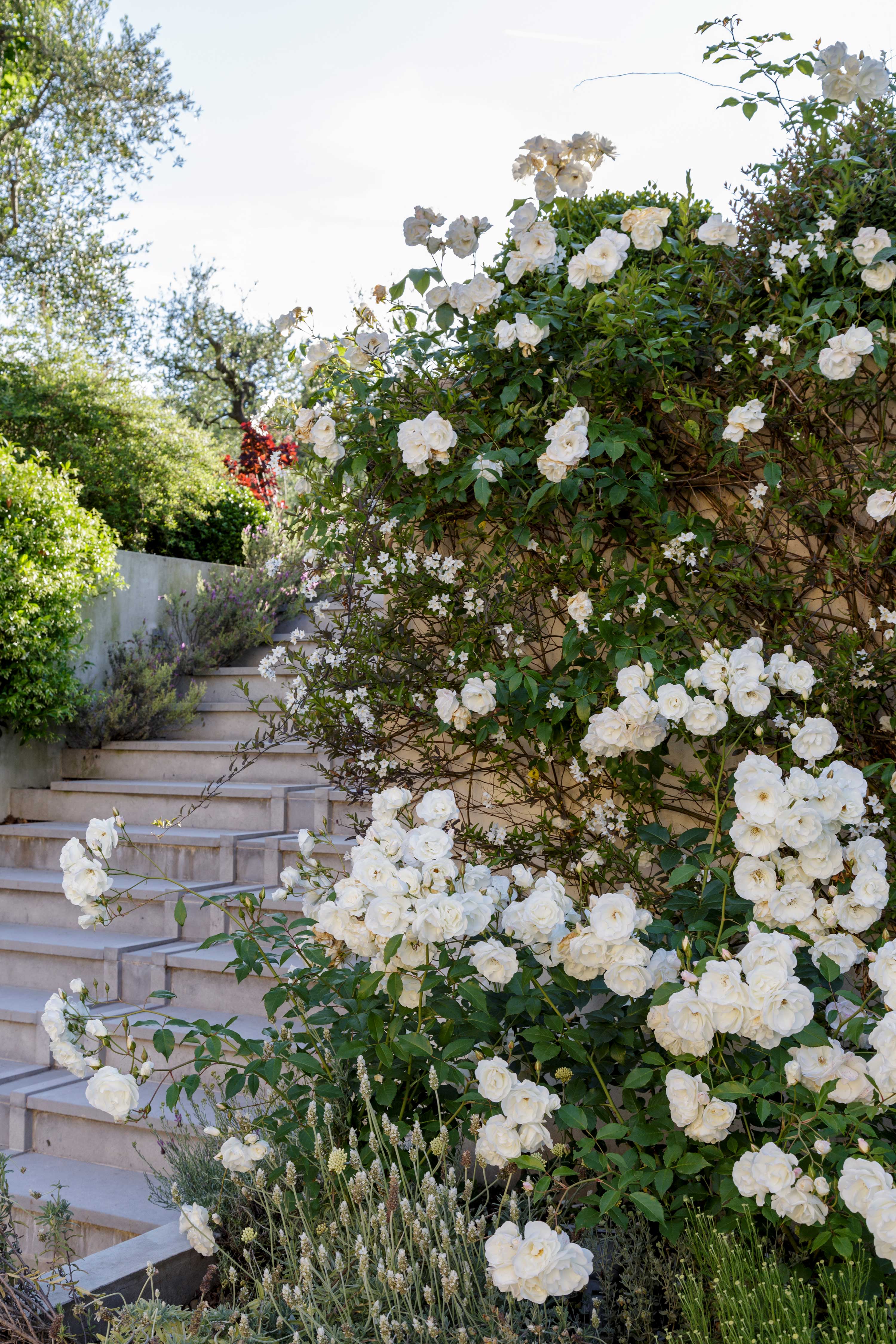
Even steps can be given a sensory boost with the help of some glorious rose bushes planted either side. Everyone knows that these blooms are beautiful to see and to smell, and their silky petals have an irresistible softness. If you'd like to plant some of your own, our advice on how to grow roses is a good place to start.
Can you spot the lavender planted up the steps, too? It'll only enhance the sweet summer fragrance further.
13. Add plenty of softness with stachys

Stachys byzantina is otherwise fondly known as lamb's ear due to its velvety leaves. They have a beautiful silvery hue, and often sport spikes of purple or white flowers come summer. Place them around a seating area or along a pathway for a soothing touch, literally.
They make a lovely addition to a sensory garden, and work well if you're on the lookout for small rock garden ideas, too.
14. Enjoy your surroundings from a pretty bench
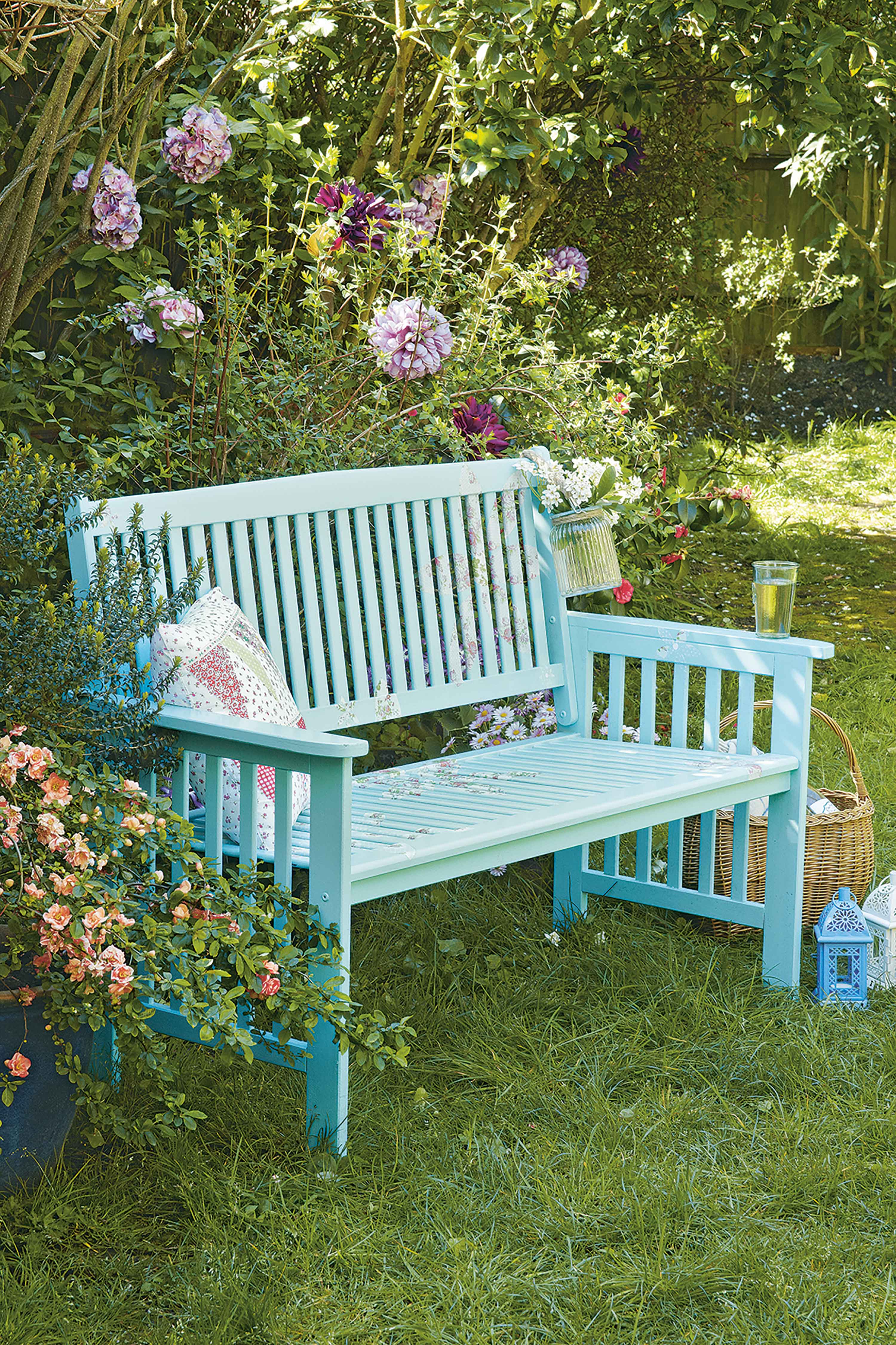
To make the most of your sensory garden ideas in action, you'll need a comfy place to sit and take them all in. Position one of the best garden benches in a shady spot to shelter from the hot sun, add a soft cushion and surround with your favorite flowers.
Then all you need to add is a nice cup of tea to sip as you sit back and relax – a perfect way to spend an hour or two.
15. Add mirrors and lighting to elevate the scene

Extra accessories such as garden mirrors or festoon lights can go a long way in elevating a sensory garden.
Soft lighting boosts the ambience of any type of plot, and will also enable you to enjoy the features of your garden after dark. Meanwhile, mirrors hung on a wall or fence increase the feeling of space and light. And, by reflecting sensory features such as colorful planting or soothing greenery, they will double the visual impact.
16. Get back to nature with an all-green theme
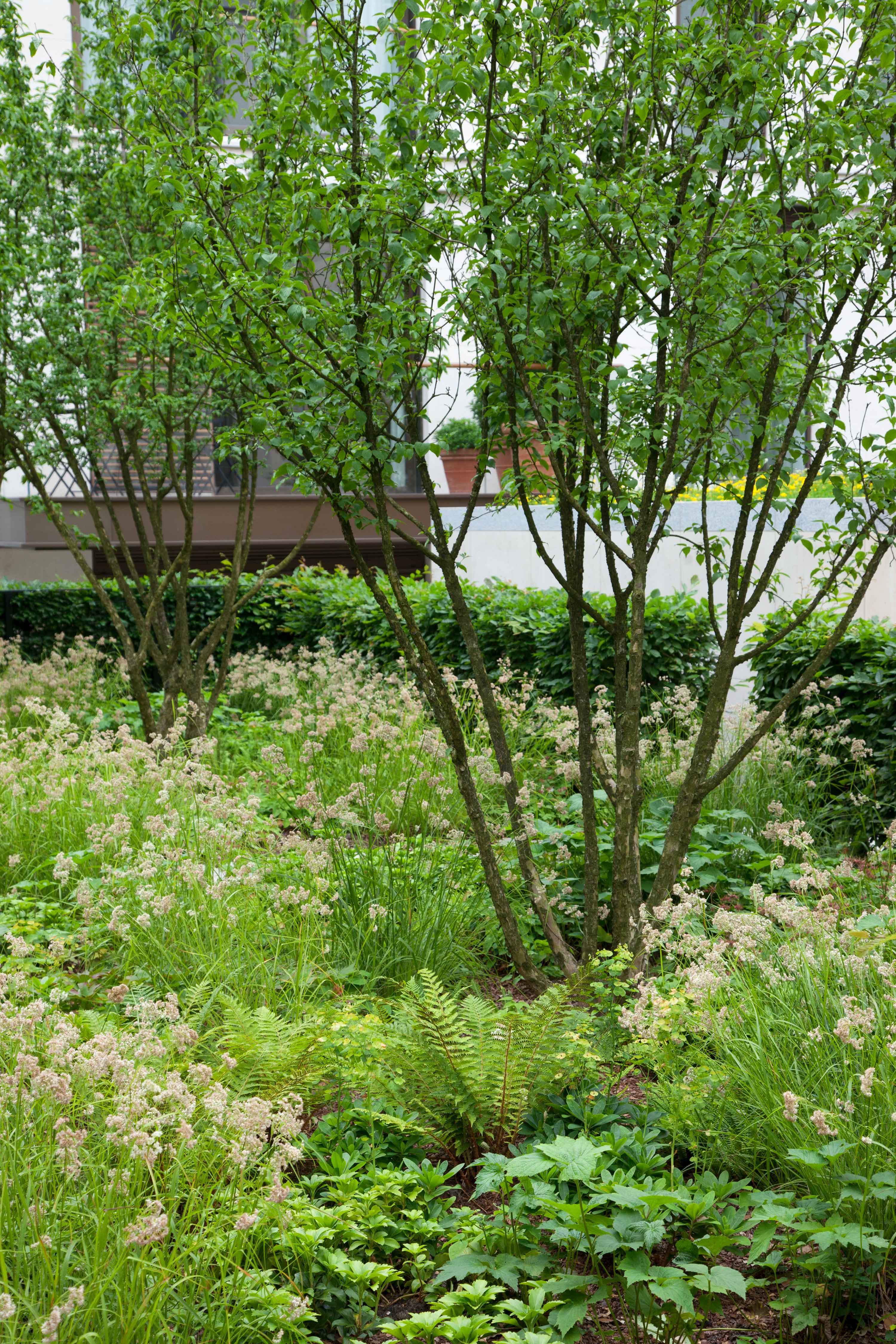
Creating an all-green scene is a wonderful way to feel immersed by nature. This is especially the case if you take the vertical space into account too, by using the best trees for small gardens. Underplant with ferns and other verdant foliage for a view that's rich in textural interest.
You could also train foliage over a pergola to create an intimate seating spot.
17. Or, create a carnival of color with bright blooms

If you're looking to electrify the senses rather than soothe them, then fill your beds with vivid blooms of all different hues. Marigolds, sunflowers, alpine strawberries, cosmos, geraniums and bright blue delphiniums look fantastic all jumbled together. They will entice butterflies to your garden too, adding an extra sense of movement and life.
And, to awaken your sense of taste, why not add in some edible flowers? Nasturtiums are a great choice with their peppery flavor, flame-colored flowers and pretty foliage.
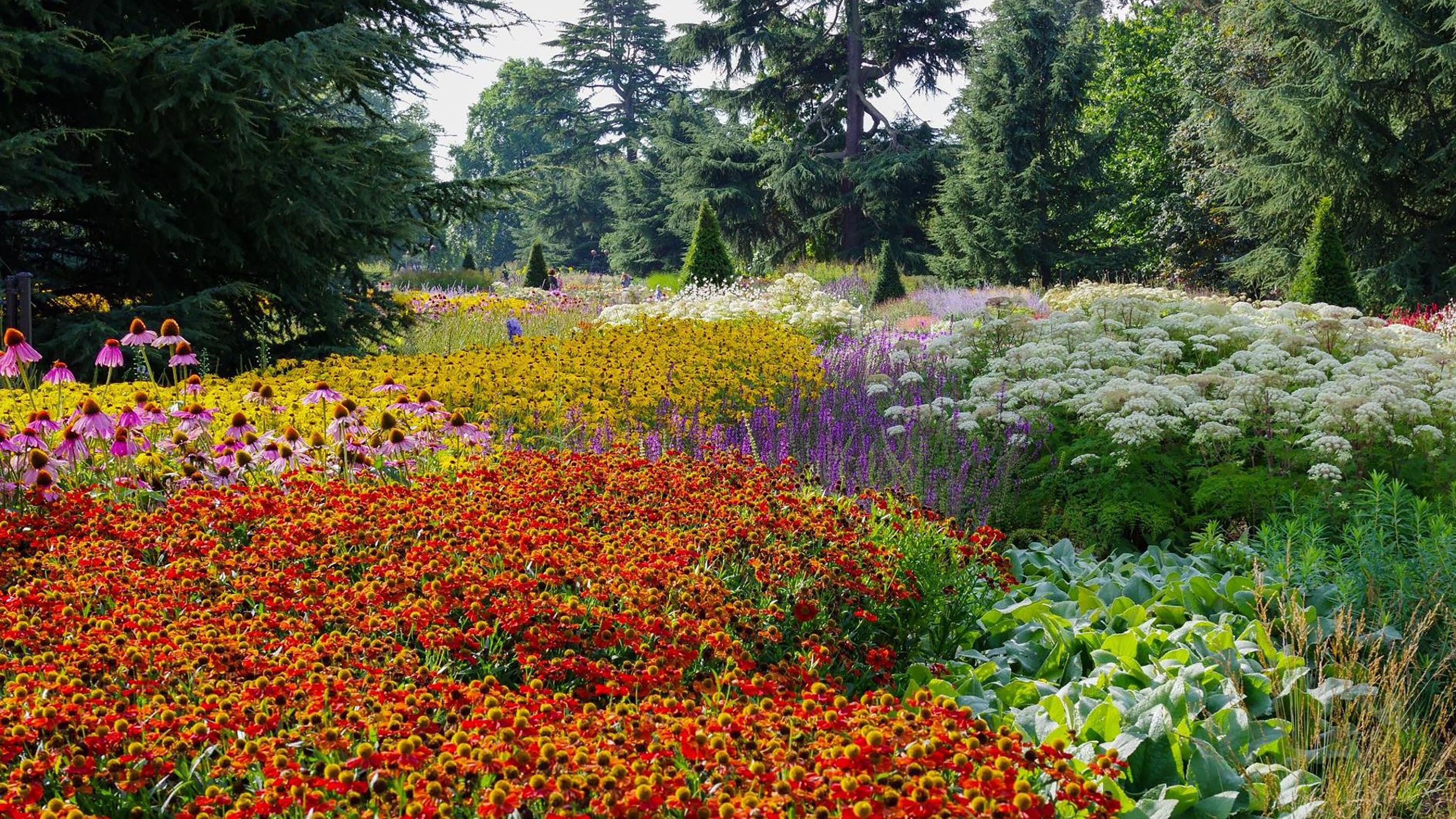
What plants are good for a sensory garden?
When it comes to good plants for sensory gardens, the experts at Kew Gardens have a few suggestions. For a bright, bold scene, they recommend the likes of Echinacea purpurea, pelargoniums, tulips, and alliums.
You could also try a cheerful mix of wildflowers, such as common poppies, corn marigold, and ox-eye daisies. Ornamental grasses make a more subtle addition, adding tons of textural interest and movement. The team at Kew suggest cortaderia (pampas grass).
You can also try Salvia argentia (the silver sage) for its woolly leaves, as well as woolly thyme – both of which are grown by Head Gardener Imogen Jackson at Horatio’s Garden Midlands.
There are lots of scented plants to incorporate too. All the flowering herbs make great additions – think rosemary, lavender, and thyme. Other scented favorites include honeysuckle, roses, jasmine, and daphne. Our guide to the different types of roses will help you pick one for your plot.
But whatever you choose, remember to always 'plant what is suitable for your garden, and only grow things that will survive in your climate, without copious amounts of watering or adjusting the conditions,' Imogen says. 'Consider how much maintenance will be needed and available before selecting plants.'
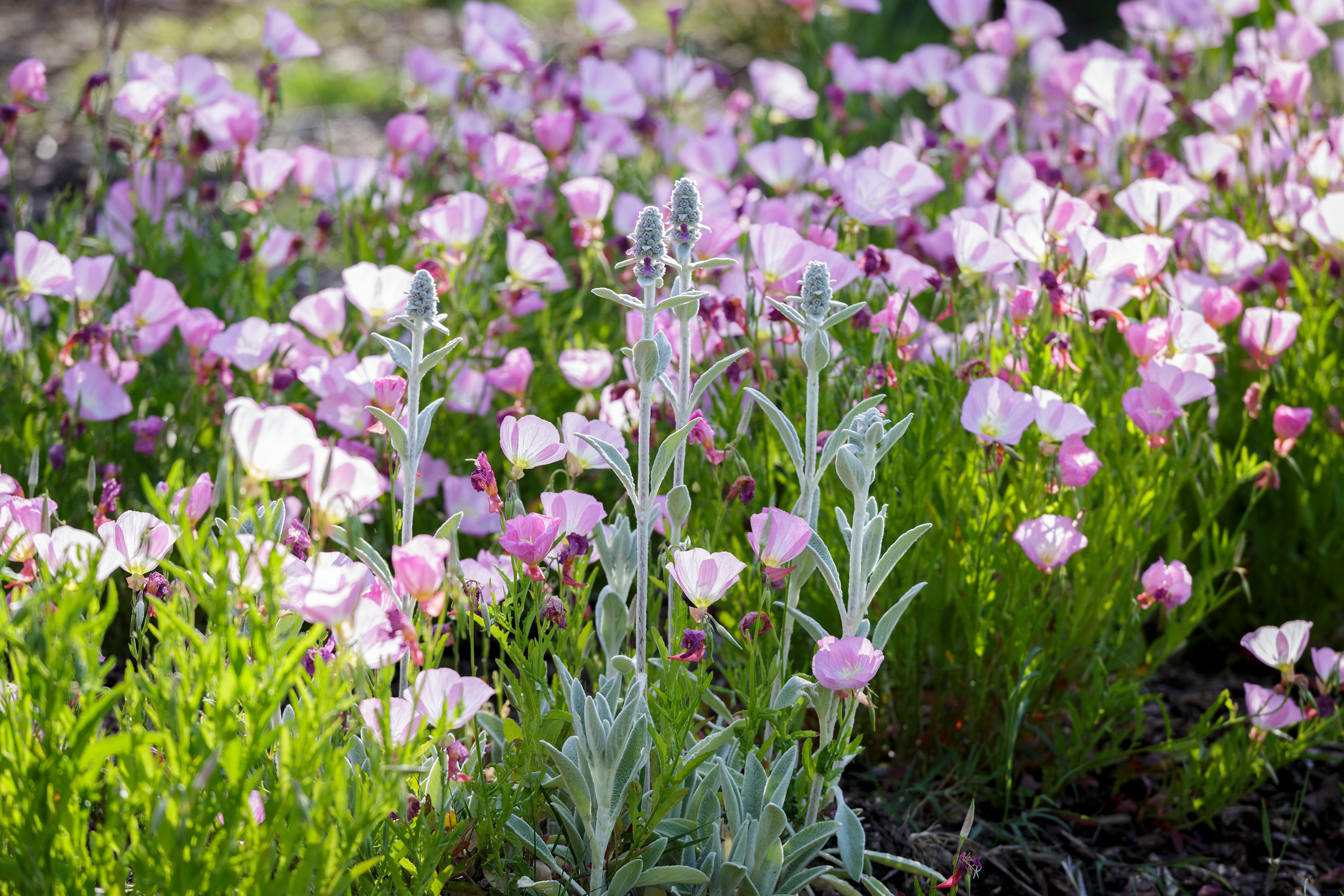
How do you make a small sensory garden?
You don't need acres of land to implement sensory garden ideas effectively. Even a tiny terrace or balcony can be transformed into a stimulating space. Sure, you might not be able to experiment with winding pathways or huge borders, but the most sweetly-scented and brightly-colored blooms can still be included by using a mixture of containers.
Small, bowl-shaped water features or even bird baths can add to the sensory appeal without taking up much room. And herbs are a wonderful choice for window boxes, which take up no floorspace at all. And whilst we're on the topic, our window box ideas feature has lots of eye-catching designs.

The garden was always a big part of Holly's life growing up, as was the surrounding New Forest where she lived. Her appreciation for the great outdoors has only grown since then. She's been an allotment keeper, a professional gardener, and a botanical illustrator – plants are her passion.
